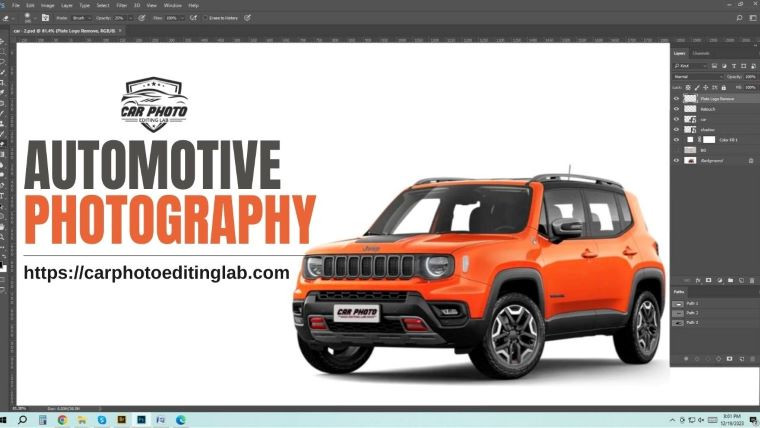-
Contact us with Whatsapp:
+8801734997063 -
Mail Us:
[email protected] -
Service Hours
24/7
How can I edit and post-process my photos effectively?

May 2024
- 03 May 2024
- Business Solution
- 0 Views
How can I edit and post-process my photos effectively?
In the era of digital photography, taking a stunning photo is just the beginning of the creative journey. The magic often happens in the editing and post-processing phase, where raw images are transformed into captivating works of art. Whether you're a seasoned photographer or a beginner looking to enhance your skills, mastering the art of photo editing and post-processing is essential. In this comprehensive guide, we'll explore techniques and tips to help you edit and post-process your photos effectively, taking them to the next level.
Understanding the Importance of Editing
Before diving into the specifics of editing and post-processing, it's crucial to understand why these steps are essential in the photographic process. Editing allows you to refine your images, correct imperfections, and enhance their visual impact. It's a creative process that empowers you to express your unique vision and style. From adjusting exposure and color balance to fine-tuning composition and sharpening details, editing transforms raw captures into polished masterpieces.
Choosing the Right Editing Software
The first step in effective photo editing is selecting the right software for your needs. While there are numerous options available, Adobe Photoshop and Lightroom are industry standards for professionals and enthusiasts alike. Both programs offer powerful tools and features specifically designed for editing and post-processing photographs. Lightroom is particularly popular for its non-destructive editing workflow and organizational capabilities, while Photoshop provides advanced editing capabilities for pixel-level manipulation and compositing.
Mastering the Basics
Before delving into advanced editing techniques, it's essential to master the basics of photo editing. Understanding concepts such as exposure, contrast, saturation, and white balance is fundamental to achieving optimal results. Familiarize yourself with the various adjustment tools available in your chosen software, including exposure sliders, curves, levels, and color balance controls. Experiment with these tools to gain a deeper understanding of how they impact your images and develop your editing style.
Develop a Consistent Workflow
Establishing a consistent editing workflow is key to maximizing efficiency and maintaining quality throughout the editing process. Begin by organizing your files and creating a structured system for importing, organizing, and cataloging your images. Develop a step-by-step editing process that includes basic adjustments such as exposure and color correction, followed by more advanced techniques such as retouching and creative effects. By streamlining your workflow, you can save time and ensure that each image receives the attention it deserves.
Utilize Presets and Templates
Presets and templates are pre-configured settings that can be applied to your images to achieve specific looks or effects. Many editing software packages include a variety of built-in presets for common styles such as black and white, vintage, and cinematic. Additionally, there are countless third-party presets and templates available for download online, allowing you to expand your creative toolkit. Experiment with different presets to discover new styles and inspirations, and customize them to suit your individual preferences.
Embrace Non-Destructive Editing
One of the advantages of digital editing is the ability to make changes to your images without altering the original file. Non-destructive editing techniques allow you to experiment freely without fear of losing valuable data. Take advantage of adjustment layers, smart objects, and virtual copies to preserve your original images while making adjustments and refinements. By working non-destructively, you can easily revert to previous versions or make further modifications as needed, ensuring maximum flexibility and control.
Pay Attention to Detail
Effective photo editing is often about the little details that make a big difference. Take the time to carefully review your images and address any imperfections or distractions. Pay attention to issues such as sensor dust, lens flare, and unwanted objects in the frame, and use tools such as the clone stamp and healing brush to remove them seamlessly. Additionally, pay close attention to composition, cropping, and alignment to ensure that your images are visually balanced and engaging.
Experiment and Innovate
While it's essential to learn the fundamentals of photo editing, don't be afraid to think outside the box and experiment with unconventional techniques. The beauty of digital editing is that there are no hard and fast rules – it's all about exploring your creativity and pushing the boundaries of what's possible. Experiment with different blending modes, filters, and adjustment layers to achieve unique looks and effects. Trust your instincts and don't be afraid to take risks – you never know what amazing discoveries you might make along the way.
Seek Feedback and Learn from Others
Finally, don't underestimate the power of feedback and collaboration in improving your editing skills. Share your work with friends, fellow photographers, and online communities, and solicit constructive criticism and advice. By seeking feedback from others and studying the work of artists you admire, you can gain valuable insights and inspiration to enhance your own editing techniques. Remember that photography is a journey of continuous learning and growth, and each editing session is an opportunity to refine your skills and expand your creative horizons.
In conclusion, effective photo editing and post-processing are essential skills for any photographer looking to elevate their work to the next level. By mastering the basics, developing a consistent workflow, and embracing experimentation, you can unlock the full potential of your images and bring your creative vision to life. Whether you're editing landscapes, portraits, or abstract compositions, the key is to approach each image with patience, passion, and a willingness to explore new possibilities. With practice and perseverance, you'll be amazed at the transformative power of editing and the incredible results you can achieve.
























0 Comment